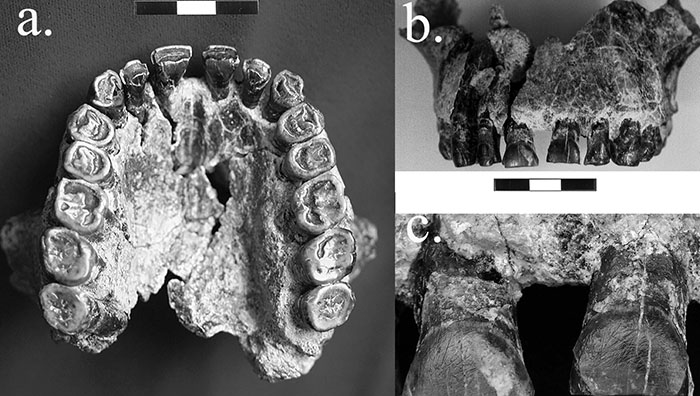Podcast: Play in new window

BOB HIRSHON (host):
A right-handed early human. I’m Bob Hirshon and this is Science Update.
At the dawn of humanity, the earliest humans would bite down on a piece of food, hold it steady in one hand, while using the other hand to cut the food with a stone tool. But sometimes they would miss, leaving scratch marks on the teeth in the direction of the hand holding the tool. Now, researchers report in the Journal of Human Evolution that a nearly two-million-year-old a jaw bone of Homo habilis from east Africa belonged to a right-handed individual.
DAVID FRAYER (University of Kansas):
Without knowing anything else about the individual, we can look at single teeth and see if the scratches are consistent with a right- or a left-hander.
HIRSHON:
University of Kansas anthropologist David Frayer says while a single fossil can’t reveal whether the majority of Homo habilis were right handers, the discovery implies that the two sides of the brain were already specialized for different tasks. I’m Bob Hirshon, for AAAS, the science society.
Story by Susanne Bard
